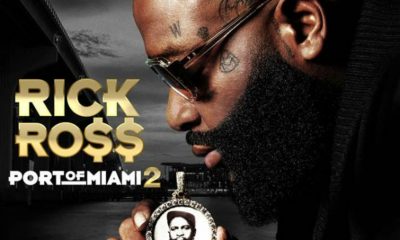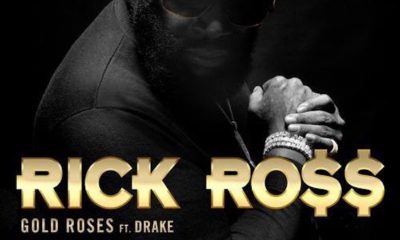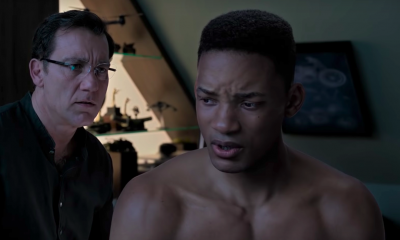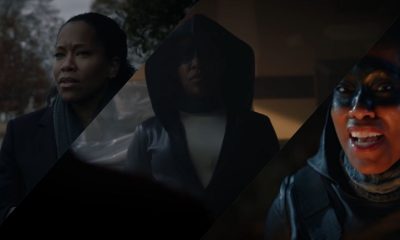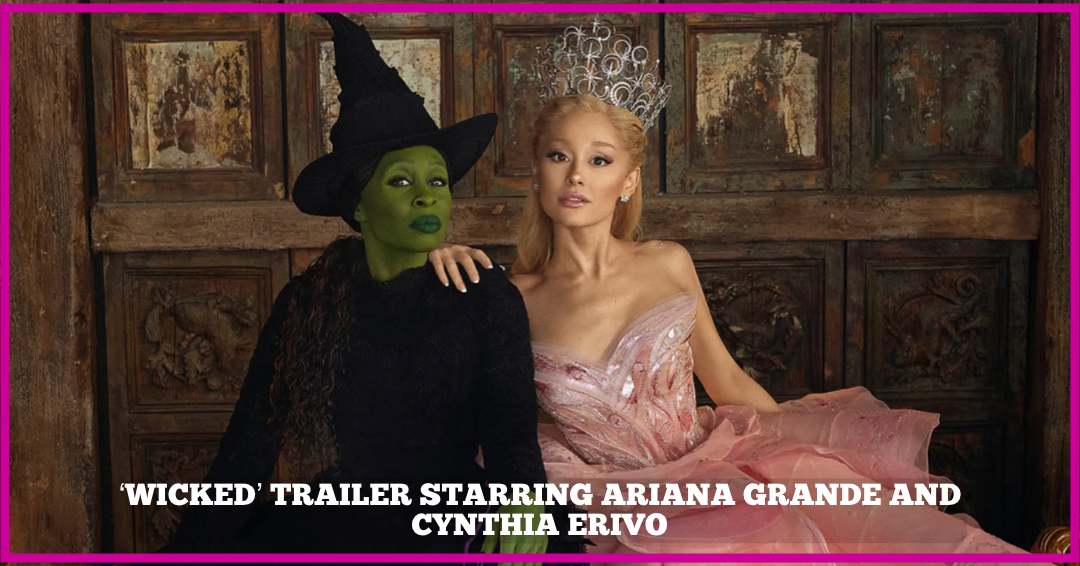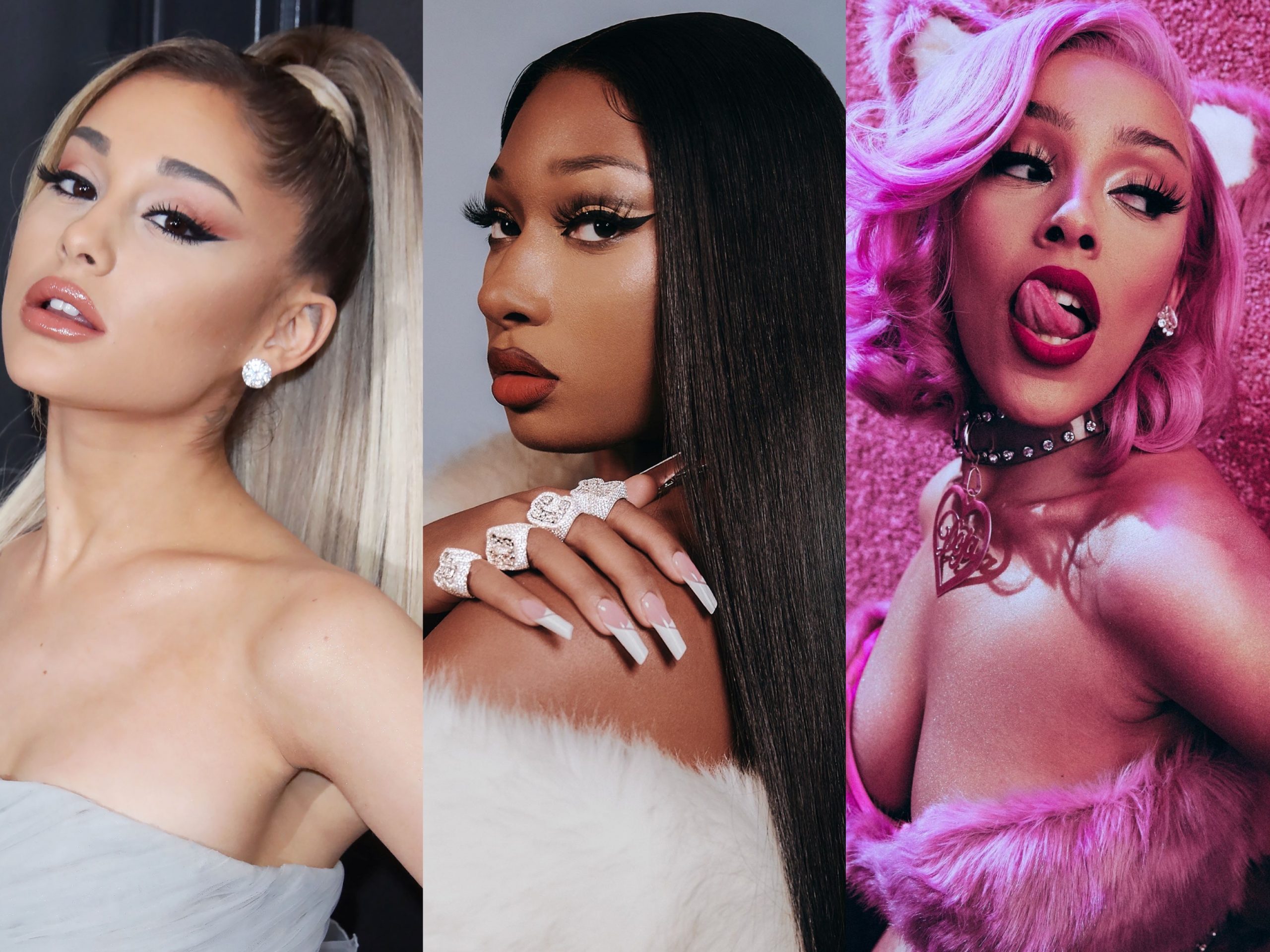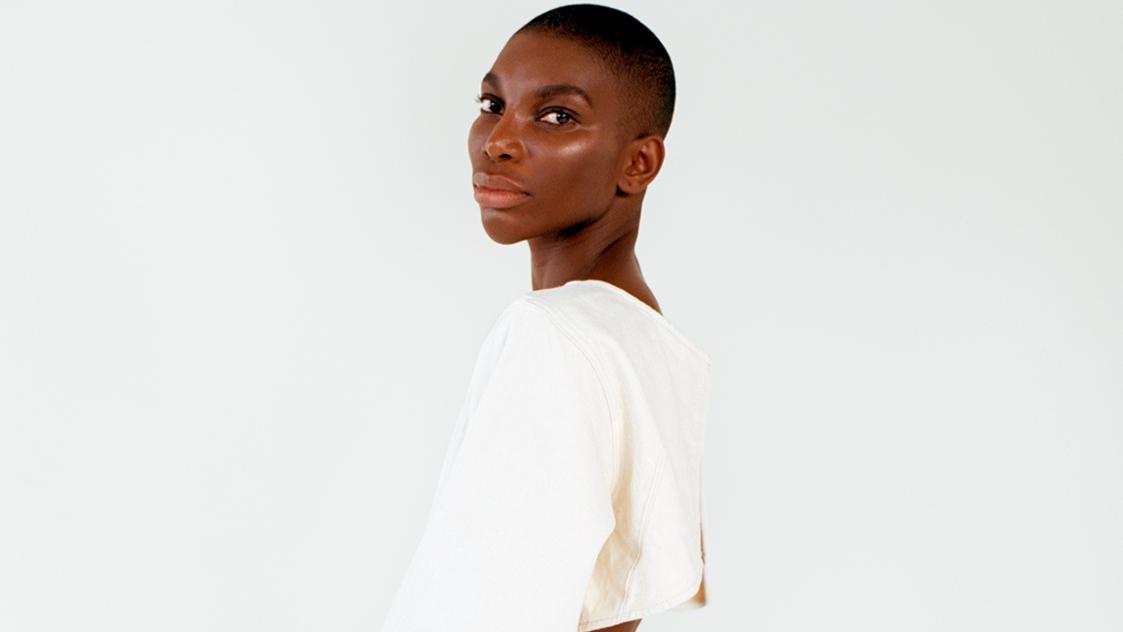Unless you've been living under a rock, you definitely know about hip-hop's latest beef between Maybach Music's, Meek Mill, and OVO Sound's Drake. Today Fader released their interview with the Toronto rapper where Drake finally broke his silence about the alleged ghostwriting claims.

The summer of 2015 ended the moment Serena Williams lost in the semifinals of the U.S. Open, and in the stands, watching it happen, was Drake. He had come to cheer for Serena amid rumors that the two were dating, and he spent most of the match on his feet, clapping with vigor and making intense faces that were projected onto TV screens all over the world.
When the match ended, Drake became the receptacle for all the disbelief and disappointment that was provoked by Serena’s stunning defeat. Within minutes, Twitter alighted with jokes about the “Drake curse,” and soon the hashtag #BlameDrake was trending all over the United States.
Maybe it would have happened to whomever Serena Williams was supposedly dating at the time—with a historic Grand Slam on the line, the stakes were high, and the need for a scapegoat was profound. But something about the hostility Drake faced after the match felt tailor-made for Aubrey Graham, and not unrelated to the summer-long winning streak he had been enjoying at the time of Serena’s loss. The reaction confirmed what had already started to become obvious: that Drake, a rapper who was once best known for being a Canadian child star working in a genre where he didn’t quite fit in, was no longer any kind of underdog. Instead, he had become a target, the kind of cultural giant who inspires love and derision in equal measure.
On a balmy Tuesday night in August, about a month before that tennis match, Drake sits in a low-lit hotel suite in Toronto, his legs stretched out in front of him and his black Timberlands up on a coffee table. Holding what looks like a glass of Hennessy dressed with huge ice cubes at his side, he’s talking about how he recently started driving himself places again. “I’ve been deprived of driving for a long time,” he says. “Riding to the studio with a driver and security and stuff, you lose something.” It used to be that driving to the recording studio was when he would come up with ideas, Drake explains. Cutting it out of his life felt like leaving inspiration on the table. “That ride was my favorite thing in the world, you know?” he says. “And before that ride, it wasn’t going to the studio, it was going to my girl’s house, or going wherever. Driving was just one of the most pivotal things in my writing life.” Driving was how Drake put himself in the mindset of the people he imagined listening to him. When he was trying to figure out if a song was working, he would picture someone playing it in their car. “Especially on this new record, I just want you to be able to…” he trails off. “Sometimes those drives are heavy, man, depending on what happened where you came from and what’s about to happen where you’re going.”
The new record Drake is talking about is Views From the 6, so named after Toronto, the city that is his birthplace, his muse, and his cause. His reps say the LP doesn’t have a release date yet but will be coming out “imminently,” and like every major release Drake has put out since his 2009 mixtape, So Far Gone, it will be released into a world where more people are paying attention to him than ever before. Starting with that first record, Drake has been leveling up continuously, and with the huge year he has just had, Views will represent the culmination of yet another growth spurt. To recap: at the start of summer 2014, Drake posted a song called “0-100/The Catch Up” on his SoundCloud page and watched it turn into a runaway hit with barely any official promotion. Then, in February, he released a surprise mixtape called If You’re Reading This It’s Too Late, which was comprised of 17 songs that, at one point, all appeared on Billboard’s 50-song Hot R&B/Hip-Hop chart simultaneously. Six even newer tracks—two of which Drake premiered on the Apple Music radio show that his label, OVO Sound, began hosting this summer as part of a reported $19 million deal—subsequently sneaked into the Hot 100. As we sit down to talk, the only remaining trace of the recent turbulence Drake experienced during an unexpected clash with Meek Mill is a Top 40 hit in the form of “Back to Back,” a diss track Drake released in the midst of the conflagration. And to cap it off, one week after our interview, he’ll fly to Atlanta to record a mixtape with Future called What a Time to Be Alive, which will go on to sell a projected half-million copies in its opening week.
I ask him, as he takes a slow sip of his drink, whether in light of his recent triumphs, he worries at all that he’s had it too easy—whether there’s any risk that he’ll start taking for granted his ability to connect with listeners.
He sounds frankly disgusted with the idea. “I’ve never felt like, ‘Oh, people will bite at anything that’s Drake,’” he says. “I’m just not that guy. I don’t feel that way about any of my music… If it didn’t connect, I would have a huge problem.”
He pauses for a second, then continues, leaning into every word: “I mean, I’m really trying. It’s not like I’m just sitting here, just fuckin’ shooting with my eyes closed. Like, I’m trying. I’m really trying to make music for your life.”
As he says this, Drake projects a practiced but convincing friendliness, and the effort he’s putting into making sure I know he’s being sincere is palpable and disarming. Still, looking at his newly close-shaved hair and the beard that now covers the lower half of his face like armor, I remember the advice he gave recently on one of his songs—Please do not speak to me like I’m that Drake from four years ago/ I’m at a higher place—and make a point of taking it.
This will be the first extended interview Drake has given since Rolling Stone published a story in February of 2014 that moved him to declare on Twitter that he would no longer be talking to magazines. It’s also the first time he has opened himself up to questions about a set of recordings that leaked this summer: so-called reference tracks for songs off If You’re Reading This that suggested Drake had based at least some of his verses on demos composed for him by other people.

By the time we’re done talking, Drake will have addressed those recordings, and opened a window onto the superpowers that allow him, more than almost anyone else in pop, to make music that is new and unfamiliar, but still deeply, widely, and reliably resonant. In the process, he will make a spirited case for collaboration in hip-hop, and put forth a vision of what it takes to make truly original and era-defining art.
For most of the year, Drake’s focus has been on Views From the 6. Undertaking the high-stakes project, he tells me, required him to hunker down in Toronto in a way he hadn’t really done in a while. After years of constant touring, sneaking in recording sessions whenever he could, and treating Los Angeles as his headquarters, Drake came home and locked in with his longtime engineer and producer, Noah “40” Shebib, the man he forged his sound with, and the friend who has been his closest creative partner since the beginning.
The choice to stay local while working on Views was a response to growing up: at 28, Drake says, he has realized that some of his best friends may no longer be at a point in their lives to “chase me around the globe anymore.” Drake and 40, in particular, have had to renegotiate the terms of their partnership. “We’ve grown a lot over the years,” Drake says. “He used to be the guy that would track me in hotel rooms at 4 a.m. And now he is not that guy—I have another guy that does that.”
He needed 40 for Views, though, he says. “If I want to make the album I want to make, I have to go find him. I have to go sit with him, and we have to really put in effort.”
It’s a marked contrast from the way Drake made What a Time to Be Alive—he and Future recorded it in just six days in Atlanta, working at night, sleeping in the studio, then waking up and working some more, according to Metro Boomin, the tape’s executive producer—and If You’re Reading This It’s Too Late, which was also completed relatively quickly, in three months, and was dominated by beats from Boi-1da and Vinylz. “That was really just me doing one song at a time and just organizing them in an order that I thought sounded really good,” he says of If You’re Reading This. “It was like an offering—that’s what it was. It was just an offering. I just wanted you to have something to start the year off. I wanted to be the first one. I wanted to set it off properly.”
The day before our interview, word came that If You’re Reading This had gone platinum. It was an unbelievable achievement, given that the project came out with no warning and no official single, and that Drake made a point of describing it as a mixtape rather than a proper album. The message seemed to be that it stood apart from the rest of Drake’s catalogue—that it was somehow a lesser work than his proper LPs. When I tell Drake that the tape sounded as cohesive to me as any “real” album I heard this year, he says, “I appreciate the compliment,” but disagrees.
“By the standard I hold myself and 40 to, it’s a bit broken,” he says. “There’s corners cut, in the sense of fluidity and song transition, and just things that we spend weeks and months on that make our albums what they are.”
Perhaps not unlike the Future project, the tape was conceived as a palate cleanser, Drake says—a wild sprint he wanted to get out of his system before turning to the marathon that would be Views. “It was the set up to be able to return to working solely with 40, which is where I’m at now,” he says, explaining that the new album has involved collaborating more intimately with 40 than he has since Take Care. “I just wanted to be able to come back to that and have it be important.”

Recording Views From the 6 in Toronto has aligned nicely with the arrival of an intense new phase in Drake’s campaign on behalf of his beloved city. That campaign has been going on for years, but the portrait Drake has been painting lately of “the 6” has been more emphatic and textured than ever. It is no longer possible, as it once was, to mistake his local boosterism with a desire to just be from somewhere, nor confuse it with a vain aspiration to bring glory to a city with little pre-existing cachet.
It helps that Drake finally gave Toronto an anthem this year in “Know Yourself,” the standout track on If You’re Reading This that had teenagers and adults all over America chanting about “running through the 6” with their woes.
“I always used to be so envious, man, that Wiz Khalifa had that song ‘Black and Yellow,’ and it was just a song about Pittsburgh,” Drake says. “Like, the world was singing a song about Pittsburgh! And I was just so baffled, as a songwriter, at how you stumbled upon a hit record about Pittsburgh. Like, your city must be elated! They must be so proud. And I told myself, over the duration of my career, I would definitely have a song that strictly belonged to Toronto but that the world embraced. So, ‘Know Yourself’ was a big thing off my checklist.”
What distinguishes Drake’s devotion to Toronto from generic hometown pride is that it comes across as the opposite of provincial. This is a testament to Toronto’s unique cultural diversity: the city’s population is about 50 percent foreign born, with immigrant communities from countries like Jamaica, the Philippines, India, and many others. To be influenced by Toronto, in other words, is to be influenced by cultures from all over the world. Drake has been channeling those diverse inputs with great enthusiasm lately, most obviously in his use of Toronto-by-way-of-the-Caribbean slang (ting, touching road, talkin’ boasy and gwanin’ wassy) and even religious Arabic words like mashallah and wallahi, a wink to Toronto’s Somali population. “We use [that lingo] every day,” he says, “but it just took me some time to build up the confidence to figure out how to incorporate it into songs. And I’m really happy that I did. I think it’s important for the city to feel like they have a real presence out there.”
The fact that Drake’s not at all worried about alienating non-Toronto fans who don’t know what certain words mean is arguably the true measure of his tire pressure right now. And insofar as he is making Toronto more of an ever-present, fleshed-out character in his music than he used to, it’s because he knows he has the standing to do so. “I’ve just become really adamant about leaving fragments in everything I do that belong strictly to my city,” he says. “The world will pick up on it.”
Though some might see his use of slang as tourism or even appropriation, Drake has forged real-life relationships with artists from scenes based abroad whose influence is felt in Toronto. His admiration for Popcaan, the Jamaican dancehall star, has given rise to an alliance between OVO and Popcaan’s Unruly Gang that resulted in a 22-minute documentary about the OVO team visiting Unruly in Jamaica; later, the patois spoken in that film ended up serving as the source material for dialogue that appeared onIf You’re Reading This.
Drake’s interest in the music of London grime MC Skepta, meanwhile, has given him the rare gift of a true companion—not an insignificant thing for the rapper who once proclaimed a “no new friends” policy as a way of dealing with newfound fame. “I was a Skepta fan, but after meeting Skepta… we were brothers immediately,” Drake says. “You don’t get that too much in this thing that we’re in, honestly. You don’t [often] meet somebody and actually feel like, ‘OK, we might actually still talk when we’re 35, 40 years old.’”
Through these affiliations and collaborations—there was also a song with Bachata star Romeo Santos in which Drake sang in Spanish—Drake has become a kind of cultural importer-exporter, or perhaps more accurately, a translator.

Read the rest of the article at Fader
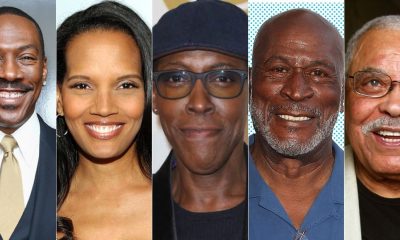
 Film & Television6 years ago
Film & Television6 years ago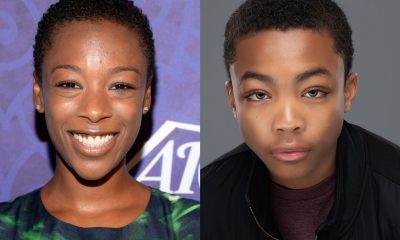
 Film & Television6 years ago
Film & Television6 years ago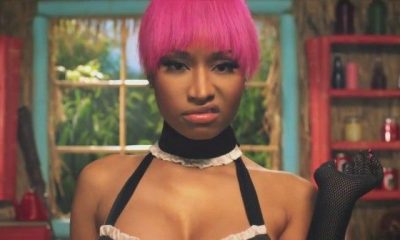
 11 years ago
11 years ago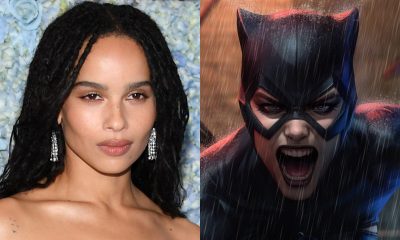
 Film6 years ago
Film6 years ago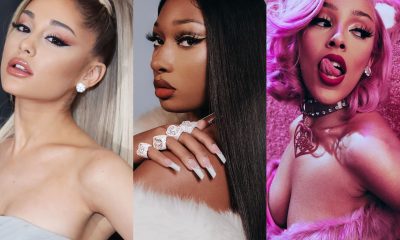
 Music5 years ago
Music5 years ago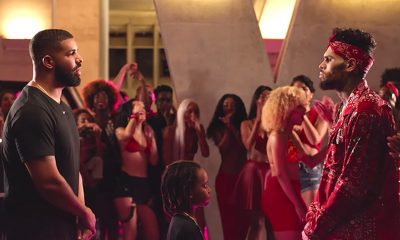
 Music6 years ago
Music6 years ago
 Film6 years ago
Film6 years ago




